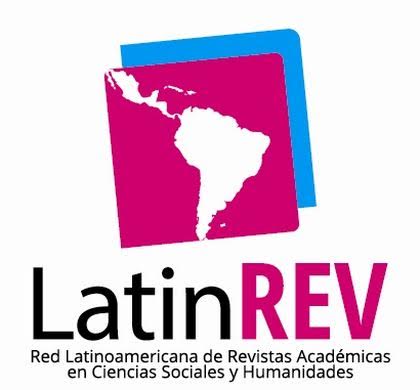Una propuesta de intervención para la asistencia de adolescentes en crianza no parental basada en evidencias
DOI:
https://doi.org/10.32870/punto.v1i14.133Palabras clave:
crianza institucional, adolescentes varones, cria i.a.p., modelo teórico, método de acompañamientoResumen
La crianza institucional representa una alternativa para el cuidado de los menores, pero también, un retraso en su desarrollo normal. El objetivo de este artículo es presentar el modelo de acompañamiento de la Comunidad de Restauración Integral de Adolescentes i. a. p., a través del cual se busca facilitar el desarrollo del adolescente varón en condición institucionalizada, atendiendo a las características propias de la edad. Este modelo toma recursos de la dinámica familiar y de los hallazgos científicos asociados a las características del comportamiento adolescente. Mucho falta aún en el camino de la validación del modelo; sin embargo, se proveen algunas bases científicas y terapéuticas que integran una propuesta digna de considerar.
Citas
Ainsworth, M. (1989). Attachments beyond infancy. American Psychologist, 44(4), 709-716 https://doiorg/101037/0003-066X444709
An, I., Zhukova, M., Ovchinnikova, I. & Grigorenko, E. (2020). An event‐related potentials study of executive functioning in adults with a history of institutionalization New Directions for Child and Adolescent Development, 2020(169), 25-40 https://doiorg/101002/ cad20329
Baumrind, D (1971) Current patterns of parental authority Developmental Psychology, 4(1), 1–103 https://doiorg/101037/h0030372
Barrett, A., & Raskin White, H. (2002). Trajectories of gender role orientations in adolescence and early adulthood: A prospective study of the mental health effects of masculinity and femininity. Journal
of Health and Social Behavior, 43(4), 451-468 https://doiorg/doi org/102307/3090237
Berens, A. & Nelson, C. A. (2015). The science of early adversity: Is there a role for large institutions in the care of vulnerable children?
The Lancet, 386(9991), 388-398 https://doiorg/101016/S01406736(14)61131-4
Bowlby, J. (1980). Attachment and loss. In sadness and depression (Vol. 3). Basic Books.
Cookstone, J. (1999). Parental Supervision and family structure. Journal of Divorce & Remarriage, 32(1-2), 107-122 https://doiorg/101300/ J087v32n01_07
Côté, J. & Schwartz, S. (2002). Comparing psychological and sociological approaches to identity: Identity status, identity capital, and the individualization process Journal of Adolescence, 25(6), 571-586 https://doiorg/101006/jado20020511
Courtney, M. & Dworsky, A. (2006). Early outcomes for young adults transitioning from out-of-home care in the USA. Child and
Family Social Work, 11(3), 209-219 https://doiorg/101111/j13652206.2006.00433.x
Covey, S (1998) The 7 habits of highly effective teens. Franklin Covey Co.
Dobrova-Krol, N., van IJzendoorn, M., Bakermans-Kranenburg, M., Cyr, C. & Juffer, F. (2008). Physical growth delays and stress dysregulation in stunted and non-stunted Ukrainian institution-reared children. Infant Behavior and Development, 31(3), 539-553 https://doiorg/101016/j infbeh200804001
European Commission Daphne Programme (2007) De-institutionalizing and Transforming Children’s Services. A Guide to Good Practices University of Birmingham, WHO Collaborating Centre for Child Care and Protection
Fondos de las Naciones Unidas para la Infancia (UNICEF), (1989) Convención sobre los derechos del niño. https://www.un.org/es/events/ childrenday/pdf/derechospdf
Fries, A., Shirtcliff, E. & Pollak, S. (2008). Neuroendocrine dysregulation following early social deprivation in children. Developmental Psychobiology, 50(6), 588-599 https://doiorg/101002/dev20319
Glennen, S (2002) Language development and delay in internationally adopted infants and toddlers: A review. American Journal of Speech-Language Pathology, 11(4), 333-339 https://doi org/101044/1058-0360(2002/038)
Goldman-Mellor, S., Margerison-Zilko, C., Allen, K. & Cerda, M. (2016) Perceived and objectively-measured neighborhood violence and adolescent psychological distress Journal of Urban Health, 93(5), 758-769 https://doiorg/101007/s11524-016-0079-0
Gudbrandsson, B (16 de marzo de 2005) Recommendation rec (2005) 5 of the Committee of Ministers to member states on the rights of children living in institutions [Declaration] En la 919th meeting of the Ministers’ Deputies. Europe. https://www.refworld.org/docid/43f5c53d4html
Havlicek, J. (2011). Lives in motion: A review of former foster youth in the context of their experiences in the child welfare system. Children and Youth Services Review, 33(7), 1090-1100 https://doiorg/101016/j childyouth201102007
Hevia-Orozco, J. & Sanz-Martin, A. (2018). EEG characteristics of adolescents raised in institutional environments and their relation to psychopathological symptoms Journal of Behavioral and Brain Science, 08(10), 519-537 https://doiorg/104236/jbbs2018810032
Hodel, A., Hunt, R., Cowell, R., Van Den Heuvel, S., Gunnar, M., & Thomas, K. (2015). Duration of early adversity and structural brain development in post-institutionalized adolescents NeuroImage, 105,
-119 https://doiorg/101016/jneuroimage201410020
Iob, E., Lacey, R. & Steptoe, A. (2020). The long-term association of adverse childhood experiences with C-reactive protein and hair cortisol: cumulative risk versus dimensions of adversity. Brain, Behavior, and Immunity, 87, 318-328 https://doiorg/101016/jbbi201912019
Kamath, S (2017) Impact of nutritional status on cognition in institutionalized orphans: a pilot study Journal of clinical and diagnostic research, 11(3), 1-4 https://doi.org/10.7860/JCDR/2017/22181.9383
Keller, T., Cusick, G. & Courtney, M. (2007). Approaching the Transition to Adulthood: Distinctive Profiles of Adolescents Aging out of the Child Welfare System Social Service Review, 81(3), 453-484 https:// doiorg/101086/519536
Kornilov, S., Zhukova, M., Ovchinnikova, I., Golovanova, I., Naumova, O., Logvinenko, T., Davydova, A., Petrov, M., Chumakova, M. & Grigorenko, E. (2019). Language Outcomes in Adults with a History of Institutionalization: Behavioral and Neurophysiological Characterization Scientific Reports, 9(1), 4252 https://doiorg/101038/ s41598-019-40007-9
Kose, S. (2003). A psychobiological model of temperament and character: TCI. Yeny Symposium, 41(2), 86-97
Lecannelier, F., Silva, J., Hoffmann, M., Melo, R. & Morales, R. (2014). Effects of an intervention to promote socioemotional development in terms of attachment security: a study in early institutionalization in Chile: attachment security in early institutionalization Infant Mental Health Journal, 35(2), 151-159 https://doiorg/101002/ imhj21436
Lee, C. & Berrick, J. (2014). Experiences of youth who transition to adulthood out of care: Developing a theoretical framework. Children and Youth Services Review, 46, 78-84 https://doiorg/101016/jchildyouth201408005
Leneman, K, Donzella, B, Desjardins, C, Miller, B & Gunnar, M. (2018). The slope of cortisol from awakening to 30 min postwake in post-institutionalized children and early adolescents. Psychoneuroendocrinology, 96, 93-99 https://doiorg/101016/jpsyneuen201806011
Lickona, T., Schaps, E. & Lewis, C. (2002). Eleven principles of effective character education Character education partnership
Mackes, N., Golm, D., Sarkar, S., Kumsta, R., Rutter, M., Fairchild, G., Mehta, M., Sonuga-Barke, E. & on behalf of the ERA Young Adult Follow-up team. (2020). Early childhood deprivation is associated with alterations in adult brain structure despite subsequent environmental enrichment Proceedings of the National Academy of Sciences, 117(1), 641-649 https://doiorg/101073/pnas1911264116
Manzano-Sánchez, D, Conte-Marín, L, Gómez-López, M, & Valero-Valenzuela, A. (2020). Applying the personal and social responsibility model as a school-wide project in all participants: teachers’ views. Frontiers in Psychology, 11, 579 https://doiorg/103389/ fpsyg202000579
Mesurado, B., Richaud, M., Mestre, M., Samper-García, P., Tur-Porcar, A., Mesa, S. & Viveros, E. (2014). Parental expectations and prosocial behavior of adolescents from low-income backgrounds. A cross-cultural comparison between three countries— Argentina, Colombia, and Spain Journal of Cross-Cultural Psychology, 45(9), 1471 – 1488 https://doiorg/101177/0022022114542284
Ozer, E. (2005). The impact of violence on urban adolescents: longitudinal effects of perceived school connection and family support. Journal of Adolescent Research, 20(2), 167-192 https://doi org/101177/0743558404273072
Oficina Regional para América Latina y el Caribe (2013). La situación de niños, niñas y adolescentes en las instituciones de protección y cuidado de América Latina y el Caribe. Fondo de las Naciones Unidas para la Infancia
Palacios, J., Román, M. & Camacho, C. (2011). Growth and development in internationally adopted children: extent and timing of recovery after early adversity: Growth and development in internationally adopted children Child Care, Health and Development, 37(2), 282-288 https://doi.org/10.1111/j.1365-2214.2010.01142.x
Petersburg, St (2009) The effects of early social-emotional and relationship experience on the development of young orphanage children Wiley-Blackwell. https://doi.org/10.1002/9781444309683
Petrowski, N., Cappa, C., & Gross, P. (2017). Estimating the number of children in formal alternative care: challenges and results Child Abuse y Neglect, 70, 388-398 https://doiorg/101016/jchiabu201611026
Pinheiro Mota, C & Mena Matos, P (2016) Caregiver’s attachment and mental health: effects on perceived bond in Institutional care. Professional Psychology: Research and Practice, 47(2), 110–119 http:// dx.doi.org/10.1037/pro0000047
Pinheiro Mota, C & Mena Matos, P (2013) Peer attachment, coping, and self-esteem in institutionalized adolescents: the mediating role of social skills. European Journal of Education and Psychology, 28, 87-
https://doiorg/101007/s10212-012-0103-z
Polich, J. (2007). Updating P300: an integrative theory of P3a and P3b Clinical Neurophysiology, 118(10), 2128-2148 https://doiorg/101016/jclinph200704019
Riggs, S (2010) Childhood emotional abuse and the attachment system across the life cycle: what theory and research tell us. Journal of Aggression, Maltreatment y Trauma, 19(1), 5-51 https://doi org/101080/10926770903475968
Robinson, G. (2005). What works in offender management? The Howard Journal, 44(3), 307 - 318
Rohner, R. & Carrasco, M. (2012). Interpersonal Acceptance-Rejection Theory (Ipartheory): theorical bases, method and empirical evidence.
Acción psicológica, 11(2), 9-26 https://doiorg/105944/ap11214172
Sanz-Martin, A., Hevia-Orozco, J., Hernández-González, M. & Guevara, M. (2017). EEG correlation during social decision-making in institutionalized adolescents Abnormal and Behavioural Psychology, 3(1) https://doiorg/104172/2472-04961000131
Schwartz, S. (2006). Predicting identity consolidation from self-construction, eudaimonistic self-discovery, and agentic personality Journal of Adolescence, 29(5), 777-793 https://doiorg/101016/jadolescence200511008
Sharpley, C., Bitsika, V., McMillan, M., Jesulola, E. & Agnew, L. (2019).
The association between cortisol: C-reactive protein ratio and depressive fatigue is a function of CRP rather than cortisol Neuropsychiatric Disease and Treatment, 15, 2467-2475. https://doi.org/10.2147/NDT. S213839
Sheridan, M., Drury, S., McLaughlin, K. & Almas, A. (2010). Early institutionalization: neurobiological consequences and genetic modifiers. Neuropsychology Review, 20(4), 414-429 https://doiorg/101007/ s11065-010-9152-8
Shumow, L., Vandell, D. & Posner, J. (1998). Harsh, firm, and permissive parenting in low-income families: relations to children’s academic achievement and behavioral adjustment Journal of Family Issues,
(5), 483-507 https://doiorg/101177/019251398019005001
Smyke, A., Zeanah, C., Fox, N., Nelson, C. & Guthrie, D. (2010). Placement in foster care enhances quality of attachment among young institutionalized children Child Development, 81(1), 212-223 https:// doi.org/10.1111/j.1467-8624.2009.01390.x
Sonuga-Barke, E., Kennedy, M., Kumsta, R., Knights, N., Golm, D., Rutter, M., Maughan, B., Schlotz, W. & Kreppner, J. (2017). Childto-adult neurodevelopmental and mental health trajectories after early life deprivation: the young adult follow-up of the longitudinal English and Romanian Adoptees study. The Lancet, 389(10078), 1539-1548 https://doiorg/101016/S0140-6736(17)30045-4
Tang, A., Fox, N., Nelson, C., Zeanah, C. & Slopen, N. (2019). Externalizing trajectories predict elevated inflammation among adolescents exposed to early institutional rearing: a randomized clinical trial. Psychoneuroendocrinology, 109, 104408 https://doiorg/101016/j psyneuen2019104408
Vázquez, Y (2020) Modelo de restauración integral como reforzador del sentido de pertenencia en los jóvenes de CRIA en el estado de Yucatán. Proyecto de investigación de licenciatura. Universidad Anahuac Mayab
Ventegodt, S., Morad, M., Press, J., Merrick, J. & Shek, D. (2004). Clinical holistic medicine: holistic adolescent medicine The Scientific World Journal, 4, 551 - 561
Wade, M., Fox, N., Zeanah, C. & Nelson, C. (2019). Long-term effects of institutional rearing, foster care, and brain activity on memory and executive functioning. Proceedings of the National Academy of Sciences, 116(5), 1808-1813 https://doiorg/101073/pnas1809145116
Wong, Y., Rew, L. & Slaikeu, K. (2006). A systematic review of recent research on adolescent religiosity/spirituality and mental health Issues in Mental Health Nursing, 27, 161-183 https://doi org/101080/01612840500436941
Yamamoto, Y. & Holloway, S. (2010). Parental expectations and children’s academic performance in sociocultural context. Educational
Psychology Review, 22(3), 189-214 https://doiorg/101007/s10648010-9121-z
Zegers, M., Schuengel, C., Ijzendoorn, M. & Janssens, J. (2006). Attachment representations of institutionalized adolescents and their professional caregivers: predicting the development of therapeutic relationships Journal of Orthopsychiatry, 76(3), 325-334 https:// doi101037/0002-9432763325
Zurbriggen, E., Gobin, R. & Freyd, J. (2010). Childhood emotional abuse predicts late adolescent sexual aggression perpetration and victimization Journal of Aggression, Maltreatment & Trauma, 19(2), 204-223 https://doiorg/101080/109267709035396
Publicado
Versiones
- 2022-02-24 (2)
- 2022-01-01 (1)
Cómo citar
Número
Sección
Licencia

Esta obra está bajo una licencia internacional Creative Commons Atribución-NoComercial 4.0.
Los autores/as que publiquen en esta revista aceptan las siguientes condiciones:
De acuerdo con la legislación de derechos de autor, Punto Cunorte reconoce y respeta el derecho moral de los autores, así como la titularidad del derecho patrimonial. Bajo la iniciativa de Budapest de acceso abierto, el autor otorga derechos conexos a la Universidad de Guadalajara, al Centro Universitario del Norte y a la revista Punto Cunorte para su difusión en acceso abierto. Punto Cunorte no realiza cargos a los autores por enviar y procesar artículos para su publicación.
Los autores/as pueden realizar otros acuerdos contractuales independientes y adicionales para la distribución no exclusiva de la versión del artículo publicado en Punto Cunorte (por ejemplo incluirlo en un repositorio institucional o publicarlo en un libro) siempre que indiquen claramente que el trabajo se publicó por primera vez en Punto Cunorte.
Esta obra está bajo una Licencia Creative Commons Atribución-NoComercial 4.0 Internacional.









